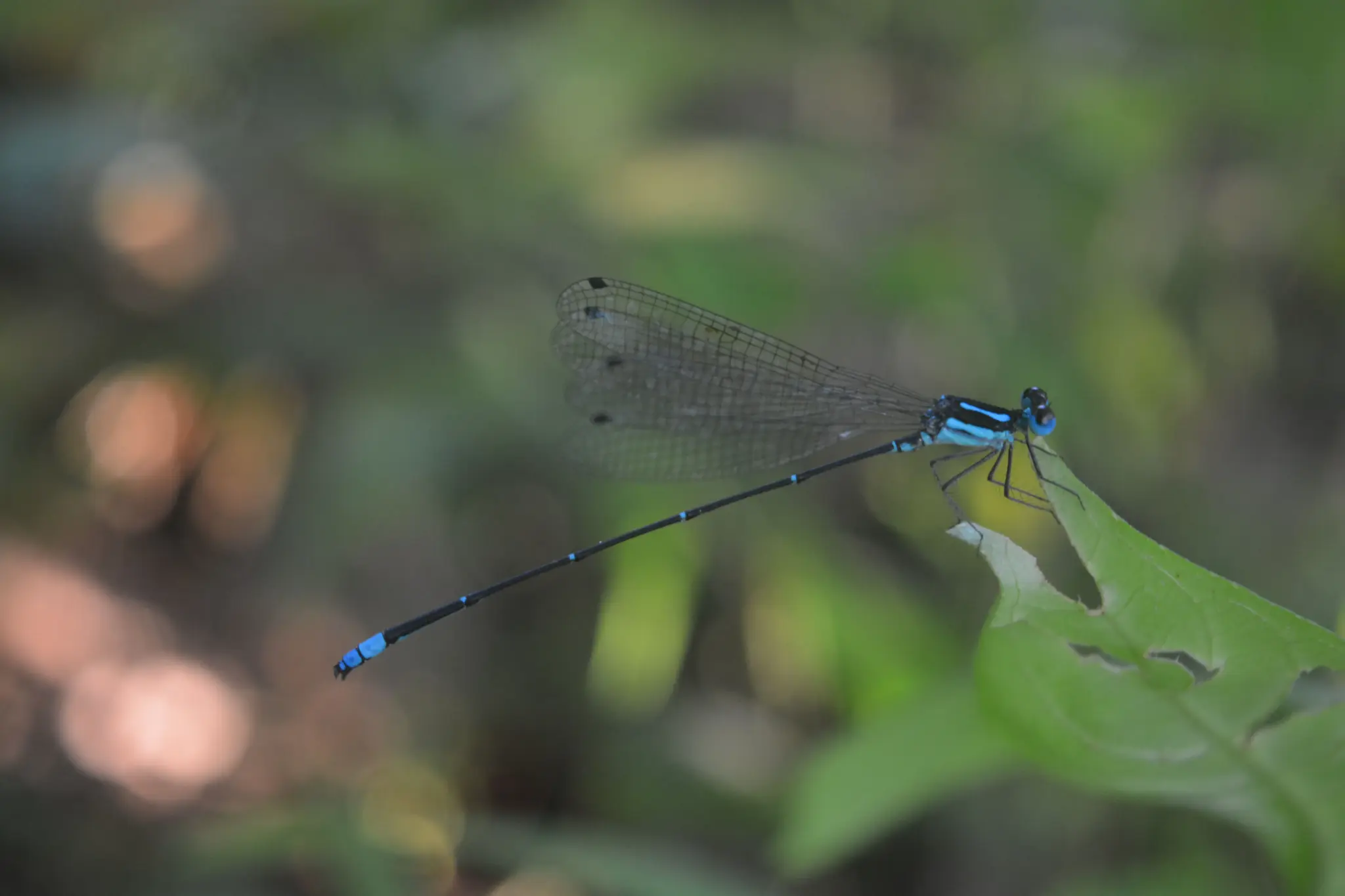About Agasthyamalai Bambootail:
- It is a new species of damselfly.
- It is a rare species belonging to the group of bambootails, so named because of their long cylindrical abdomen resembling a bamboo stalk.
- It was discovered from the Agasthyamalai landscape of Western Ghats.
- The only other species in this genus is the Malabar Bambootail (Melanoneura bilineata) that is found in the Coorg-Wayanad landscape of the Western Ghats.
- The members of this genus can be separated from other bambootails by the absence of the anal bridge vein in their wings.
- This genus of damselflies has long black bodies with brilliant blue markings.
- The new species differs from the Malabar Bambootail in the structure of prothorax, anal appendages, and secondary genitalia.
Key Facts about Damselflies:
- Damselfly is any of a group of predatory, aerial insects that are in the order Odonata.
- Damselflies are found mainly near shallow, freshwater habitats and are graceful fliers with slender bodies and long, filmy, net-veined wings.
- They are generally smaller, more delicate, and fly weakly in comparison with dragonflies.
- The large eyes of damselflies differ from those of dragonflies in that they are always widely separated, rather than close together or touching each other.
- Their colours can be stunningly vivid.
- Wingspans among the 2,600 damselfly species range from 18 mm (0.71 inch) to about 19 cm (7.5 inches) in Megaloprepus caerulatus, a giant damselfly of tropical Central and South America.
- Immature damselflies, called larvae (or sometimes nymphs or naiads), are, with very few exceptions, aquatic predators in freshwater habitats.
Q1: What are Dragonflies?
Dragonfly is any of a group of roughly 3,000 species of aerial predatory insects most commonly found near freshwater habitats throughout most of the world. Damselflies (suborder Zygoptera) are sometimes also called dragonflies in that both are odonates (order Odonata).Dragonfly species (Anisoptera) are characterized by long bodies with two narrow pairs of intricately veined, membranous wings that, while generally transparent, may have coloured markings. Unlike damselflies, the front and rear wing pairs are shaped differently.
Source: New species of damselfly discovered at Manjadininnavila in Kerala
Last updated on December, 2025
→ Check out the latest UPSC Syllabus 2026 here.
→ Join Vajiram & Ravi’s Interview Guidance Programme for expert help to crack your final UPSC stage.
→ UPSC Mains Result 2025 is now out.
→ UPSC Notification 2026 is scheduled to be released on January 14, 2026.
→ UPSC Calendar 2026 is released on 15th May, 2025.
→ The UPSC Vacancy 2025 were released 1129, out of which 979 were for UPSC CSE and remaining 150 are for UPSC IFoS.
→ UPSC Prelims 2026 will be conducted on 24th May, 2026 & UPSC Mains 2026 will be conducted on 21st August 2026.
→ The UPSC Selection Process is of 3 stages-Prelims, Mains and Interview.
→ UPSC Result 2024 is released with latest UPSC Marksheet 2024. Check Now!
→ UPSC Prelims Result 2025 is out now for the CSE held on 25 May 2025.
→ UPSC Toppers List 2024 is released now. Shakti Dubey is UPSC AIR 1 2024 Topper.
→ UPSC Prelims Question Paper 2025 and Unofficial Prelims Answer Key 2025 are available now.
→ UPSC Mains Question Paper 2025 is out for Essay, GS 1, 2, 3 & GS 4.
→ UPSC Mains Indian Language Question Paper 2025 is now out.
→ UPSC Mains Optional Question Paper 2025 is now out.
→ Also check Best IAS Coaching in Delhi

















